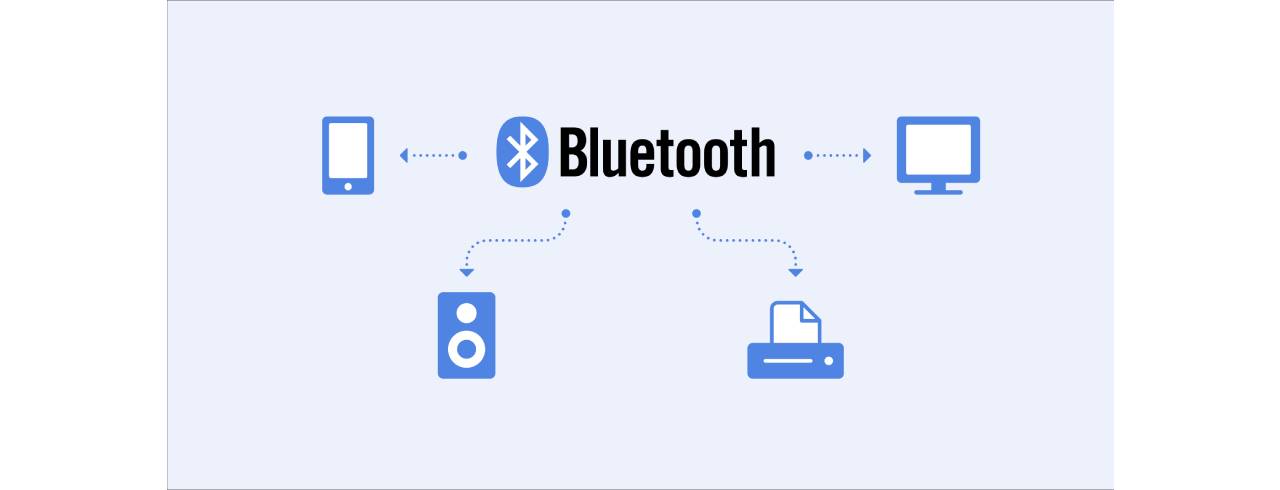To share files or link with other Bluetooth-enabled gadgets, you can utilise Bluetooth on your smartphone. Data can be exchanged over short distances via a Bluetooth module, which does not require any connections. Using Bluetooth, devices must be linked before they would begin exchanging data for security purposes. Based on the technology you're trying to connect to, the procedure of pairing the devices will be different.

Bluetooth-enabled devices are generally protected against hacking. As a result, Bluetooth is the wireless technology for working on a wide range of frequencies, as they switch between them constantly.
When it comes to Bluetooth security, it's known as "frequency-hopping spectrum sensing," and it's practically impossible for hackers to get into your devices through the Bluetooth signal.
When pairing mobile phones with other devices, Bluetooth is frequently employed. Whether it's your headphones, car, or smart fridge, you can use this. When you connect a printer or keyboard to a computer, you may not see it doing anything.
It can be challenging to tell which Bluetooth & Wi-Fi devices communicate because they are often complementary and operate simultaneously. Just realise that if you're in range of a Bluetooth-enabled device, it will help to link automatically.
Any phone you now own will at the very least support Bluetooth. It's a limited, universally applicable & easy-to-implement element: unless your smartphone is exceedingly old or damaged, Bluetooth should be present. If you only want to see if you get it, go to your phone's Settings and type in "Bluetooth".
There are several similarities between Bluetooth and NFC, including that NFC can be used in combination with Bluetooth for speedier connections. Differences include:
· When it comes to data transfer, NFC does not require "pairing," connecting two Bluetooth devices.
· NFC can only be used within a few feet of a device (usually less than 10 cm).
· No mobile payments are possible using Bluetooth.
· Unlike NFC, Bluetooth is supposed to get a value of at least 200 feet and transfer data more quickly than that technology.
· To begin, make sure Bluetooth is turned on on your device. Make sure Bluetooth is enabled by going to Settings > Bluetooth & turning the switch on.
· The Bluetooth icon can be found by sliding down at the top of the phone's notification area or pressing and holding the Bluetooth button. To turn it on or off, tap it.
· Pairing
To join two Bluetooth devices, you must first pair them. When two people pair up, it functions as a virtual handshake that connects them. As long as your Bluetooth is enabled, no one can assume command of the devices or transmit your files against your consent, even if they enter the room.
The process of syncing two devices is a breeze. Look for and tap the gadget's name in your smartphone's Bluetooth submenu (the path of which you can find above), and then you'll be all set to connect. Connecting to a device is as simple as typing in the device's id in the box provided. After a few seconds, the two devices must be able to connect.
If your Bluetooth device asks for a PIN to connect, look it up in the user handbook to see what it is.
The process of connecting two Bluetooth-enabled devices is once again simple. You can swiftly move files around between phones connected via Bluetooth.
· Both devices should be connected via Bluetooth.
· To connect the two devices, you'll need to locate & tap one of them.
· Ensure the device is visible if you don't see it.
· When asked, enter the pin number by tapping on the device.
Wireless earphones may have a few distinct setup procedures depending on the manufacturer. However, headphones demand that you hit the relevant button to start them discoverable for security concerns. This is most often found on the headphone's casing.
· Turn on the Bluetooth on the phone.
· Activate your gadget by pressing the power button.
· The Bluetooth connection button should pair your device if it doesn't appear in the list automatically.
· Once you've paired the devices, you're all set to start.
· Please reference your device's instruction manual if this doesn't work.
Wireless speakers and headphones are among the most prevalent Bluetooth applications. So it's no surprise that Bluetooth has overtaken the audio socket on phones as the preferred method of connecting headphones, as you don't have to worry about tangled connections or wires.
If you're hosting a party and don't want to keep your smartphone plugged into a wall to play music, a compact, powerful Speaker system is a perfect alternative.
Using Nordic nRF52840/nRF52833 SoC by Ble Module with an optimised comprehensive radio design on the PCB antenna, the MS88SF31 module is a sophisticated, ultra-compact, very flexible, super-duper power wireless BLE 5.0/5.1 Module. To take advantage of all the nRF52840/nRF52833 hardware features & functionality, MS88SF3 implements 802.15.4 (Thread/Zigbee), Bluetooth 5's Long Range Feature, & advanced security abilities. It also provides USB access and higher than or equal to +8 dBm transmit power.